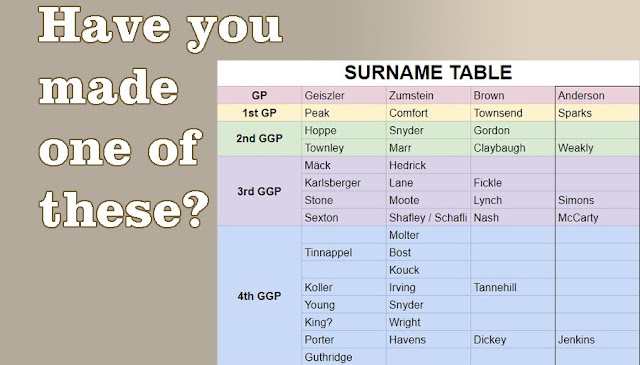Where to Find Physical Descriptions of Your Ancestor
Descriptions of our ancestor's physical appearance can help us see them in our mind's eye. But how can we discover what they looked like if we don't have videos or photos to provide evidence?
Discover some of the best resources for physical descriptions. Then use these clues to improve your family history writing projects as we discussed in How To Describe Your Ancestor's Physical Appearance.
Military Draft cards are a gold mine of information. Sadly, they are primarily descriptions of males as men were required to register during the Civil War, WWI and WWII in the US. The features recorded include:
- height (tall, short, medium)
- weight (slight, medium, stout)
- hair color
- eye color
- race
- physical markings - tattoos, scars, large moles
- physical deformities (if applicable)
Passport Applications are incredible because they are not reserved primarily for males. Additionally, some passports come with photos. You have to love that!!! Passports vary over time, but the more recent ones record:
- height
- weight
- hair color
- eye color
- complexion
- defining marks
Yearbooks don't often record the verbal description of your ancestors, but they can have photos. And the more pictures you have of an ancestor, the better you are when you need source material to describe their appearance.
You can access yearbooks from a variety of sources, two of which are Ancestry and MyHeritage. However, many digital archives such as Internet Archive, Digital Public Library of America, Classmates.com or University Archives such as the Ohio State University Yearbook collection have online yearbooks for your viewing pleasure. You might also find yearbooks at your local library, be sure to ask the librarian.
Additional Sources to Investigate:
- Ship Manifests - Some ship manifests since the 1900s have included the physical description of their passengers. The records might record height, hair color, complexion, and physical handicaps. Be sure to look for any mention of medical concerns that might have happened during the trip as well.
- Declarations of Intention to Naturalize - You'll find skin color, height, weight, eye and hair color, and distinctive marks in such citizenship papers, but they are on more modern records. You won't find these details in the declarations from the 1850s.
- The U.S. Customs Service records document American seamen from New York and New Jersey. These records are available at the National Archives.
- Chinese Exclusion Act Case Files created in 1882 to prohibit all immigration of Chinese laborers. Individuals of Chinese origin or ancestry were stopped upon arrival in San Francisco, and a case file was created. The time span for the collection on Ancestry.com includes the years 1903-1944. Search Ancestry for the index to the actual files house at the Pacific Region (San Francisco) of the National Archives and Records Administration.
- Rumor has it that voter registration cards, especially around 1880, have physical descriptions on them. I have not researched in an area that has voter registrations with this much detail. If you have had this experience, let me know.
- Finally, if your ancestor was a criminal, check prison records. These records needed to describe their inmates, and that's a benefit to you!
Further Reading - Describing Our Ancestors Series:





Comments
Post a Comment